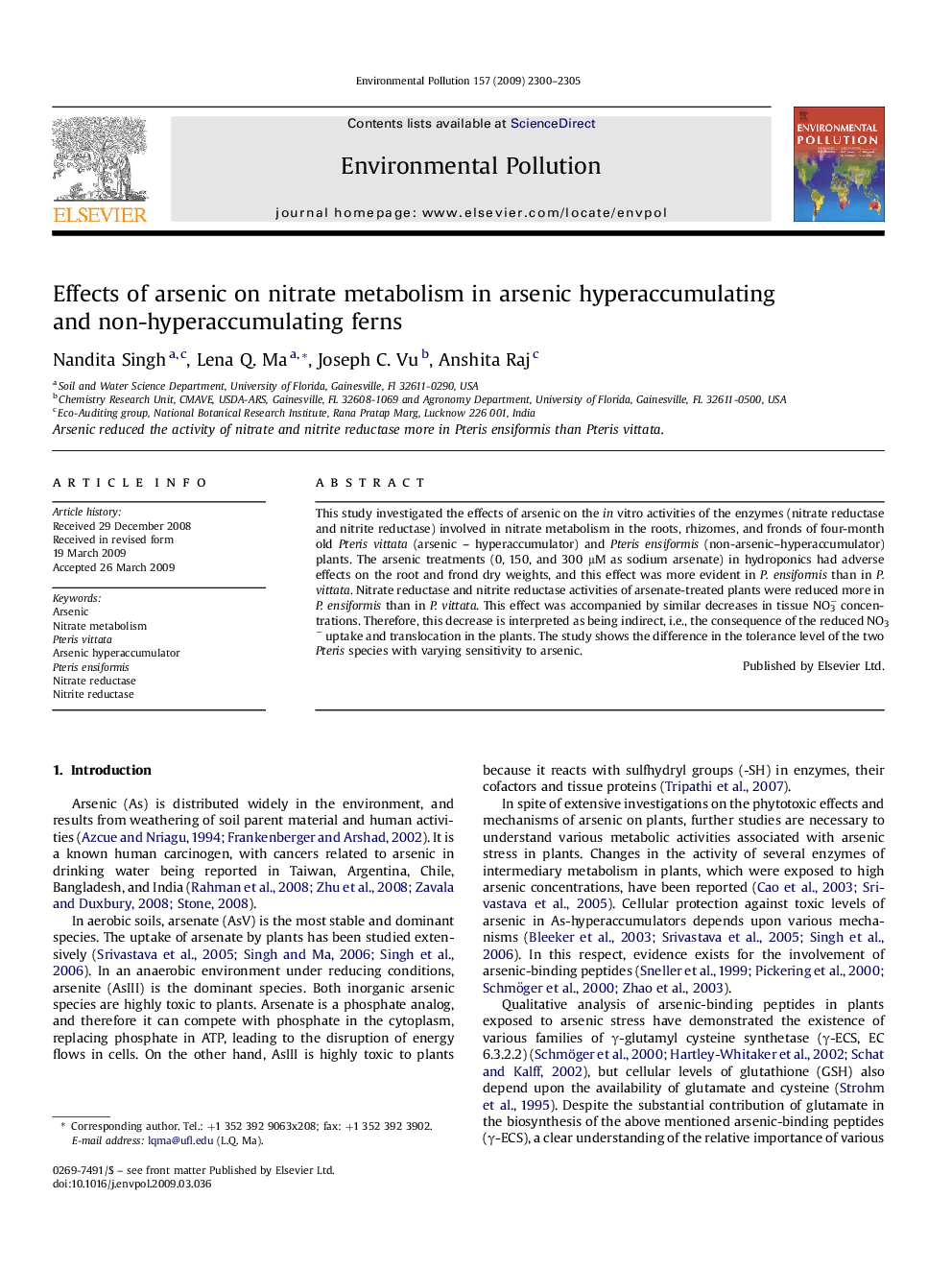| Article ID | Journal | Published Year | Pages | File Type |
|---|---|---|---|---|
| 4425862 | Environmental Pollution | 2009 | 6 Pages |
This study investigated the effects of arsenic on the in vitro activities of the enzymes (nitrate reductase and nitrite reductase) involved in nitrate metabolism in the roots, rhizomes, and fronds of four-month old Pteris vittata (arsenic – hyperaccumulator) and Pteris ensiformis (non-arsenic--hyperaccumulator) plants. The arsenic treatments (0, 150, and 300 μM as sodium arsenate) in hydroponics had adverse effects on the root and frond dry weights, and this effect was more evident in P. ensiformis than in P. vittata. Nitrate reductase and nitrite reductase activities of arsenate-treated plants were reduced more in P. ensiformis than in P. vittata. This effect was accompanied by similar decreases in tissue NO3− concentrations. Therefore, this decrease is interpreted as being indirect, i.e., the consequence of the reduced NO3− uptake and translocation in the plants. The study shows the difference in the tolerance level of the two Pteris species with varying sensitivity to arsenic.
